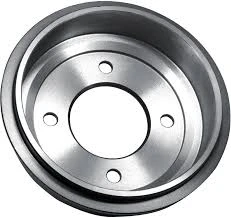
-
 Afrikaans
Afrikaans -
 Albanian
Albanian -
 Amharic
Amharic -
 Arabic
Arabic -
 Armenian
Armenian -
 Azerbaijani
Azerbaijani -
 Basque
Basque -
 Belarusian
Belarusian -
 Bengali
Bengali -
 Bosnian
Bosnian -
 Bulgarian
Bulgarian -
 Catalan
Catalan -
 Cebuano
Cebuano -
 Corsican
Corsican -
 Croatian
Croatian -
 Czech
Czech -
 Danish
Danish -
 Dutch
Dutch -
 English
English -
 Esperanto
Esperanto -
 Estonian
Estonian -
 Finnish
Finnish -
 French
French -
 Frisian
Frisian -
 Galician
Galician -
 Georgian
Georgian -
 German
German -
 Greek
Greek -
 Gujarati
Gujarati -
 Haitian Creole
Haitian Creole -
 hausa
hausa -
 hawaiian
hawaiian -
 Hebrew
Hebrew -
 Hindi
Hindi -
 Miao
Miao -
 Hungarian
Hungarian -
 Icelandic
Icelandic -
 igbo
igbo -
 Indonesian
Indonesian -
 irish
irish -
 Italian
Italian -
 Japanese
Japanese -
 Javanese
Javanese -
 Kannada
Kannada -
 kazakh
kazakh -
 Khmer
Khmer -
 Rwandese
Rwandese -
 Korean
Korean -
 Kurdish
Kurdish -
 Kyrgyz
Kyrgyz -
 Lao
Lao -
 Latin
Latin -
 Latvian
Latvian -
 Lithuanian
Lithuanian -
 Luxembourgish
Luxembourgish -
 Macedonian
Macedonian -
 Malgashi
Malgashi -
 Malay
Malay -
 Malayalam
Malayalam -
 Maltese
Maltese -
 Maori
Maori -
 Marathi
Marathi -
 Mongolian
Mongolian -
 Myanmar
Myanmar -
 Nepali
Nepali -
 Norwegian
Norwegian -
 Norwegian
Norwegian -
 Occitan
Occitan -
 Pashto
Pashto -
 Persian
Persian -
 Polish
Polish -
 Portuguese
Portuguese -
 Punjabi
Punjabi -
 Romanian
Romanian -
 Russian
Russian -
 Samoan
Samoan -
 Scottish Gaelic
Scottish Gaelic -
 Serbian
Serbian -
 Sesotho
Sesotho -
 Shona
Shona -
 Sindhi
Sindhi -
 Sinhala
Sinhala -
 Slovak
Slovak -
 Slovenian
Slovenian -
 Somali
Somali -
 Spanish
Spanish -
 Sundanese
Sundanese -
 Swahili
Swahili -
 Swedish
Swedish -
 Tagalog
Tagalog -
 Tajik
Tajik -
 Tamil
Tamil -
 Tatar
Tatar -
 Telugu
Telugu -
 Thai
Thai -
 Turkish
Turkish -
 Turkmen
Turkmen -
 Ukrainian
Ukrainian -
 Urdu
Urdu -
 Uighur
Uighur -
 Uzbek
Uzbek -
 Vietnamese
Vietnamese -
 Welsh
Welsh -
 Bantu
Bantu -
 Yiddish
Yiddish -
 Yoruba
Yoruba -
 Zulu
Zulu
Understanding the Functionality of Self-Adjusters in Drum Brake Systems
How Drum Brake Self-Adjusters Work
Drum brakes are a vital component in many vehicles, providing reliable stopping power and performance. One of their notable features is the self-adjusting system, which ensures that the brake shoes maintain an optimal distance from the brake drum as they wear down over time. Understanding how drum brake self-adjusters work can enhance vehicle maintenance and promote safer driving.
At the core of drum brake self-adjusters is a simple mechanical principle as the brake shoes wear due to normal use, the self-adjuster automatically compensates for that wear to maintain proper brake performance. This is crucial because improperly adjusted brakes can lead to decreased stopping power, uneven tire wear, and increased brake system strain.
Typically, the self-adjuster is a series of linked components located within the drum brake assembly. When the brake pedal is pressed, the brake shoes expand outward and make contact with the inner surface of the brake drum. This friction creates the necessary stopping power. However, over time, the friction material on the brake shoes wears down, increasing the gap between the shoes and the drum.
how drum brake self adjusters work

To address this issue, self-adjusting mechanisms utilize a ratchet system and a manual or automatic adjustment method. In many designs, the self-adjusting system incorporates a lever arm connected to the brake shoes. When the brakes are applied, this lever engages a ratchet gear, which turns in a direction that moves the shoes closer to the drum. If the shoes wear down further, the ratchet allows the adjuster to catch and incrementally adjust until the shoes are at the correct distance from the drum.
One common feature of drum brake self-adjusters is that they typically engage during vehicle braking. They might also adjust during reverse motion when the vehicle is backing up. In many cases, when the driver applies the brakes in reverse, the action of the shoes against the adjuster lever helps to advance the adjustment, realigning the brake shoes regularly with the drum surface.
Maintenance of the self-adjusting system is crucial for optimal performance. For instance, if the self-adjuster becomes clogged with dirt or brake dust, or if it malfunctions due to wear and tear, it may fail to adjust properly. This could lead to reduced braking efficiency. Therefore, regular inspections during brake service are important to ensure that the self-adjusters are functioning correctly.
Overall, drum brake self-adjusters are an ingenious solution to maintain the effectiveness of drum brake systems. By automatically compensating for wear, they help ensure that driving remains safe and efficient. Car owners should be mindful of their brake system’s condition and consult with a mechanic if they notice any signs of wear, such as decreased braking performance or unusual noises from the drum brakes. Keeping the braking system well-maintained ensures that it continues to provide reliable performance for many miles ahead, making drum brake self-adjusters an essential aspect of drum brake technology.
-
What Are Drum BrakesNewsJul.07,2025
-
Understanding Brake Drum MaterialNewsJul.07,2025
-
Semi-Trailer Brake Drum: A Key Component for Extreme Loads and Long-Distance TransportNewsJul.07,2025
-
Drum Brake Pads for SaleNewsJul.07,2025
-
Brake Drums for SaleNewsJul.07,2025
-
Brake Drum ManufacturerNewsJul.07,2025
-
Aluminum Brake Drums: The Future of High-Performance CarsNewsJul.07,2025
